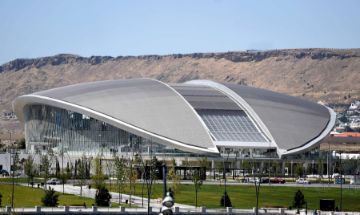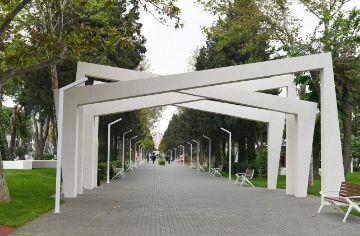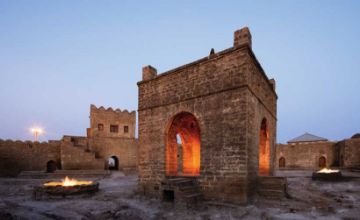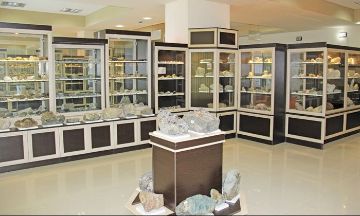Kuwaiti Dinar
English
Baku
It is the capital and largest city of Azerbaijan and one of the largest cities located in the Caucasus region. The city is considered a scientific, cultural, industrial and commercial center in Azerbaijan. The city blends with a Western European cultrure and, on the other hand, an Eastern Islamic culture.
AMBURAN MALL
This mall is located in Bilqa offering several restaurants, cafes, shopping stores and some entertainment activities.
0.000 د.ك.
ATATURK PARK
Ataturk Park is one of the longitudinal public parks in the center of Baku and has a long promenade along Ataturk Street.
0.000 د.ك.
ATELIER VIVANDA
An international restaurant with more than one branch in Baku and specializes in burgers and delicious steaks and also serves local Azerbaijani dishes
0.000 د.ك.
ATESHGAH
The present fire temple of Atishgah , located 35 km from the capital, Baku, was built by Zoroastrian Indian merchants in the seventeenth and eighteenth centuries in a place where natural gas seeping to the surface of the earth was burning. The Ateshgah Temple holds at its core one of the ancient religions of the Azerbaijani people, which is the worship of fire. In Zoroastrian legends, the place of fire is a sacred place, and fire used to come out of it from 7 places, and inscriptions return to it. During his reign, Baku was a cultural and religious center for the Indian subcontinent, who were trade partners for the people of the Caspian Sea region, and they used to pass a lot on this region. The place has been turned into a museum since 1975, after years of building gas and oil stations, and it is visited annually by 15,000 people. The temple was a place of worship until the year 1880. By the decision of Azerbaijani President Ilham Aliyev on December 19, 2007 the State Architectural Historical Reserve - Ateshgah Temple was established. It was nominated for the UNESCO World Heritage List in 1998, and declared an important historical monument in Azerbaijan in 2007.
0.000 د.ك.
AZERBAIJAN GEOLOGICAL MUSEUM
The museum was established in 1982 in accordance with the decision of the Council of Ministers, displays in the museum exhibitions of rocks, minerals and crystals deep in Azerbaijan. The Azerbaijani Geological Museum works with accordance of the Ministry of Environment and Natural Resources works. The museum was restored by a decision of the President in 2018.
0.000 د.ك.






